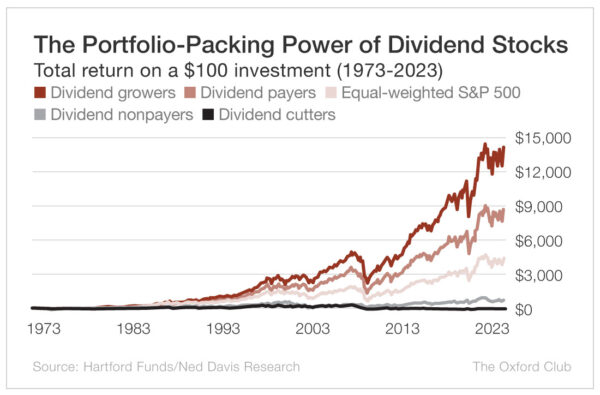5 Legit Artificial Intelligence Stocks Under $10
Since the invention of ChatGPT, investors have been scrambling to buy up stock in the world’s largest artificial intelligence companies. As a result, most of the top AI stocks now cost hundreds of dollars to buy. With this in mind, I’ve created a list of the best artificial intelligence stocks under $10.
Before I jump into it, remember that most brokerages will let you buy fractional shares of popular stocks. This means that you can buy a small part of a stock, instead of the whole thing. So, you don’t need $800 to buy a share of Nvidia (Nasdaq: NVDA). You can buy just a piece of it for as low as a few dollars.
That said, exploring artificial intelligence stocks under $10 is also a great way to identify potentially undervalued companies. Some of the stocks that are trading for $10 today could be worth $100 or more a year from now.
Top Artificial Intelligence Stocks Under $10
1.) Pagaya Technologies: Building an AI Lending Network
Pagaya Technologies (Nasdaq: PGY) is an AI lending company that uses AI to make borrowing/lending money easier. Pagaya’s technology allows for precise, real-time customer credit evaluations to match people with lenders. Here’s how it works:
- John Doe submits an application for a loan that falls outside his lender’s requirements.
- John’s application is automatically sent to Pagaya.
- Pagaya’s model analyzes John’s application and sends it to other lenders with less strict requirements.
- John instantly gets a direct offer from another lender.
Despite the size of the lending market, many lenders still use fairly one-dimensional metrics to evaluate lendees (like a credit score). Using AI, Pagaya is attempting to bridge the gap between lenders and under served borrowers. This creates a rare win-win-win opportunity. Borrowers get better access to loans, lenders get access to high-quality borrowers, and Pagaya gets a small percentage of each transaction.
In 2023, this “small percentage” added up to an annual revenue of $812 million and a net loss of $128 million. In fact, Pagaya only has a market cap of $622 million – meaning that it’s currently valued at less than its 2023 sales. This is very unusual. Usually, companies will trade at several multiples of their previous sales. For example, Tesla (Nasdaq: TSLA) is worth $455 billion on 2023 sales of just $97 billion.
This incentivized me to do a bit more research to understand why Pagaya’s stock is trading so low.
What’s Going on at Pagaya?
If Pagaya did nearly $1 billion in 2023 sales then why is it worth under $700 million? And, why is its stock price cheap enough to land on a list of the top artificial intelligence stocks under $10?
My first thought was that Pagaya must be doing poorly financially. But, I read their most recent quarterly update and it seemed like there was a ton of good news. The company reported record results that exceeded their expectations from earlier in the year. This included Q4 revenue of 218 million (+13%) and signing US Bank (NYSE: USB) as a client. The company has also been rapidly adding investor and funding partners. So, this doesn’t explain why Pagaya’s stock is sub $10.
I did a bit more digging into Pagaya’s past. Here’s what I found out:
- Pagaya went public via an SPAC in 2022: The company merged with EJF Acquisition Corp and was first valued at $8.5 billion. But, after going public, two things happened:
- Barclays (NYSE: BCS) backed out of being Pagaya’s underwriter.
- Many Pagaya insiders sold their shares before Pagaya’s stock began trading.
- Pagaya went public at $120/share. The stock initially surged to almost $300/share before crashing down to between $10 and $20 per share – where it has stayed ever since.
When an underwriter backs out of a deal, it’s a sign that they might disagree with the company’s valuation. And, when insiders are unloading stock, it’s a sign that they don’t expect the stock to go any higher.
During 2021 and 2022, there was a rush of companies going public via SPACs. This created a bit of a bubble. It’s likely that Pagaya’s insiders secured a massive overvaluation when going public and cashed out their chips quickly. This has likely left a bad taste in investors’ mouths and could be one reason why no one is talking about Pagaya or buying the stock. If this is true, Pagaya could be a massive underappreciated opportunity.
NOTE: There’s also a chance that Pagaya issues share splits or reverse splits. This would impact the stock’s price significantly. This analysis has a fair bit of conjecture, as there was little reporting on Pagaya’s SPAC merger.
2.) United Microelectronics Corp: A Smaller TSM?
United Microelectronics Corp (NYSE: UMC) is another company that’s a bit of a headscratcher. UMC is a top semiconductor chip foundry in Tawain. On its website, it boasts that it’s top 3 in global pure-play foundry market share. It also reports having 12 fabs across Asia. But, despite this strong resume, UMC seems a bit undervalued.
In 2023, UMC reported an annual revenue of $6.8 billion and a net income of $1.87 billion (converted from TWD to USD). But, it has a market cap of just $19 billion. This just seems incredibly low, given the nature of UMC’s business (helping provide chips to AI companies).
One thesis is that UMC likely competes directly with Taiwan Semiconductor (NYSE: TSM). TSM is one of the biggest foundries in the world, which means UMC faces steep competition – a fact that investors might be factoring into UMC’s valuation.
3.) Iris Energy: A BTC and AI Combo Play
I’ve written about Iris Energy (Nasdaq: CIFR) pretty extensively in my article on “The Top 5 Bitcoin Mining Stocks.” Iris Energy owns and operates a number of data centers. It uses these data centers primarily for Bitcoin mining. But, it diversifies its business by also offering AI cloud services. This puts Iris Energy in a unique position to capitalize on two rapidly growing industries (crypto and AI).
4.) Snap Inc: Can This Social Media Company Make a Comeback?
I was surprised to see Snap Inc. trading at less than $10 since it still seems incredibly popular. I use it all the time and so do most of my friends/family. Upon further review, Snap Inc. brought in a healthy $4.6 billion in 2023 annual revenue. But, this revenue was flat YoY and Snap also posted a loss of $1.32 billion.
Snap seems to suffer from the same issue that Twitter did from 2010-2020. It has an insanely loyal fan base who use the app all the time. But, it has trouble when it comes to growing this user base and converting it into a consistent revenue stream. Twitter had the same problem for years. Despite being the main hub for breaking news, Twitter has never been able to consistently turn a profit. Snap Inc. has had the same trouble so far.
A lot of this has to do with the fact that Snap can’t charge for its products. If Snap starts charging its users to use the platform then there’s a good chance many people will simply delete the app and move to Instagram (Nasdaq: META), TikTok, or another app. So, Snap has to come up with more creative ways to make money.
I doubt Snap will ever really compete with apps like Facebook or TikTok. But, if they can figure out the right way to monetize the platform then I wouldn’t be surprised to see Snap make a comeback.
5.) Lantern Pharma: An AI Pharma Play
Investing in pharmaceutical companies can be a good way to find artificial intelligence stocks under $10. This is because early-stage pharma companies are usually unprofitable, as they work to develop treatments. If the treatment gains regulatory approval then the company’s stock can quickly soar. But, if the treatment fails to get approved then the stock will remain worthless.
Lantern Pharma (Nasdaq: LTRN) is using AI and machine learning to streamline the development of drugs. Notably, the company just recently gained approval for expanding its Phase II Harmonic clinical trial of a new drug for treating non-small cell lung cancer. This approval could pave the way for Lantern’s drug to enter the market.
You’ll want to continue following the approval process for this drug closely if you plan on buying Lantern Pharma stock. If it gets approved then Lantern’s revenue could quickly soar from $0 to $1m, $10, or even $100m.
I hope that you’ve found this article valuable when it comes to discovering 6 artificial intelligence stocks under $10. If you’re interested in reading more, please subscribe below to get alerted of new articles as I write them.
Disclaimer: This article is for general informational and educational purposes only. It should not be construed as financial advice as the author, Ted Stavetski, is not a financial advisor.
About Teddy Stavetski
Ted Stavetski is the owner of Do Not Save Money, a financial blog that encourages readers to invest money instead of saving it. He has five years of experience as a business writer and has written for companies like SoFi, StockGPT, Benzinga, and more.





